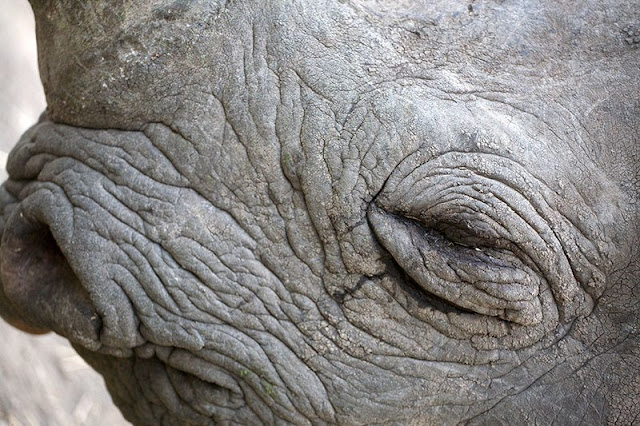 |
| RhinoScape Lake Nakuru, Kenya Canon 7D & 300 f2.8IS |
At about 8:30 this evening I was editing some work from our recent trip to Kenya and plotting a pathway into today's blog. My first inclination was to discuss photography with a focus on animal landscapes. We had spent a day touring Lake Nakuru National Park and were fortunate to see a herd of five white rhinoceros in some really sweet light... this unique encounter was going to be the seed for my discussion.
 |
Shortly after processing the lead image (see top), I was rudely interrupted by a solicitor.... I knew it was a solicitor because my caller ID said, Pittsburgh and..., I don't know anyone from Pittsburgh. Anyway I decided to answer the phone figuring that I'd just hang up when I got that pregnant pause... you all know the pause, it's the moment between the pick up and the butchering of my name. Well, you can imagine my surprise when the young lady who called my home said, "Hello, I'm calling from the World Wildlife Fund, and I want you to know that Rhinoceros populations are on a steep decline."
 |
A steep decline!...
Not only do I know about this crisis, I teach it. I try to help my students understand the problems associated with extinction and loss of biodiversity every year.
In my classes, I often discuss how species become threatened or endangered, due to the unending human expansion and perpetuation of irrational behaviors in the name of tradition and ideology. Needless to say, I was quite receptive to my solicitor. I shared that she could not have picked a better moment to call my home, and that I would gladly donate to a program that was funding the transfer of black and white rhinos to Ol Pejeta Conservancy... it was a very weak and humbling moment for me.
 |
- Rhinoceros belong to the order perissodactyla, the group known as odd toed ungulates. Perrisodactyla also includes the equines (horse, zebra, donkey), and tapirs.
- Rhinoceros-like mammals have been roaming the planet for over 30 million years and their ancestral forms had a larger range than all of the species currently here today. The distribution of prehistoric rhinos once included Europe, large areas of Asia and North America.
- There are only five living species of rhinoceros today, all of which are threatened by poaching and considered to be endangered. In general, rhinoceros numbers are so low that they can only be found in national parks, conservancies, and protected forests.
- There are less than 21,000 individual rhinoceros living in parks and reserves, and their numbers are falling.
- According to the World Wildlife Fund, there are fewer than 25 individual Sumatran Rhinoceros.
- The Javan Rhinoceros survives in isolated pockets of Indonesia and Vietnam. Poaching and deforestation are decimating their population. The current census predicts that there are fewer than 75 Javan Rhinos left in the wild.
- The Indian Rhinoceros is also known as the "Great One Horned Rhinoceros (Rhinoceros unicornis)." While its range once included Pakistan, Burma, and China, it is now restricted to the mountain slopes of Nepal and protected regions of India.
- The Black Rhinoceros is a solitary and often cantankerous browser. They have a semi-prehensile lip that is used to gently pluck leaves from bushes and shrubs. This is one of two species of rhinoceros that can be found in Africa. The image pictured above and below are the same individual. He is a blind rhino that lives in Ol Pejeta Conservancy, and part of their public outreach program.
- The white rhinoceros is subdivided into two sub-species. The southern white rhino is on a road to recovery with a population that exceeds 14,000 individuals. The largest population can be found in South Africa. In contrast, there are as few as eight northern white rhinoceros on the planet today. The largest sub-population lived in a zoo in the Czech Republic. In 2009 the four Czech white rhinos were translocated to Ol Pejeta, where they hope to rebuild the population. Unlike the black rhinoceros, white rhinoceros are gregarious grazers. They use their wide lip to mow down the savanna grasses.
What Can You Do?
1. Tell the people you know that rhinoceros populations on this planet are threatened with extinction.
2. Write your government and tell them that you care and that you want them to support the rules and treaties defined by CITES (Convention on International Trade in Endangered Species).
2. Write your government and tell them that you care and that you want them to support the rules and treaties defined by CITES (Convention on International Trade in Endangered Species).
4. Make a donation to Ol Pejeta Conservancy... we did! Ol Pejeta is home to 86 black rhinoceros, 10 southern white rhinoceros, and 4 (of 8 on the planet!) northern white rhinoceros. These animals roam throughout the 90,000 acres of protected Kenyan forests, mountains, and grasslands.
5. Fight for biodiversity! Every species is the product of evolution by natural selection and every species on this planet contributes to the complexity of the world in which YOU live!
©2000-2010 BTLeventhal.com / Bruce & Tamy Leventhal. All rights reserved. No image on this site may be used without permission


No comments:
Post a Comment